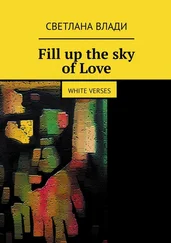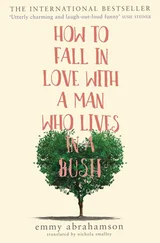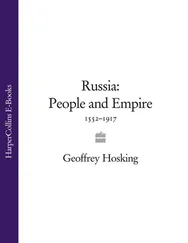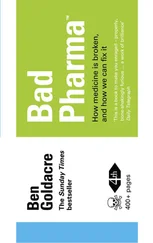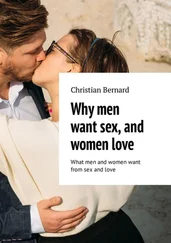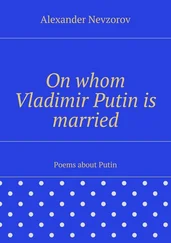The tsars annexed this Muslim region in the late nineteenth century. It was never fully pacified until Stalin – infuriated by endless cut-throat rebellions by the Chechens and the Ingush, worried they would greet Hitler as a liberator – who ordered them to be deported to Central Asia. It was genocide: one-third to half of them died. Returning under Khrushchev these ‘punished people’ never had their own collaborating Soviet nomenklatura like the Tatars or the Bashkirs. This meant that when the collapse came, those who took control were not used to politics, and their games with Moscow ended in two wars and at least 50,000 dead. 48Conflict de-Russified these republics. Today Chechnya, Dagestan and Ingushetia are less than 5 per cent ethnic Russian – a figure less than in independent Moldova, Kyrgyzstan or Estonia. 49War brought enmity into a million social ties. With the destruction of the ‘social union’, the paradoxical situation of the early 2000s – when normal Russians wanted Chechnya in Russia, but not to have a single Chechen living outside of Chechnya – has unravelled. Today post-conflict bitterness has fused with a fury at the excesses of the ‘vertical of corruption’ in Grozny. Russians find Putin’s Caucasian ‘stability’ demeaning and exorbitant. When Putin goes – the popular will would come to bear on this. Chechnya is in personal union with Putin – not Russia. And in the North Caucasus it is the linchpin republic. Most Russians I have spoken to want Muslim Chechens, Ingush and Dagestanis out. A powerful opposition leader (he asked not to be quoted by name) speaks for the majority: ‘They are already basically independent in Chechnya. We don’t want to pay for them anymore. They are worthless provinces that contribute nothing to us.’
Reading opinion polls is to come face to face with a damning verdict. Despite Putin’s self-styled ‘historic role’ in the North Caucasus, a full 51 per cent of Russians would not even care if their borders were redrawn to exclude Chechnya. 50The nation is angrier, more nationalist and exclusivist, than it was when he took over – as many as 59 per cent concur with the slogan ‘Russia for Russians’. This is now a country where 56 per cent expect ethnic clashes will soon occur. 51Over one-third feel irritation, dislike or fear at the sight of North Caucasians in their home towns. These are not the statistics of successful reintegration, but frozen disintegration. 52
The difference is that today no one thinks that letting Chechnya go will Balkanize Russia. Stability has done the opposite of what Putin expected. Polls show an appetite for a new nationalism that rejects expansionism, in the name of a smaller, purer Russia. It fascinates Navalny. He wants to ride this wave to power. ‘A very interesting thing occurred in the past ten years,’ he said thoughtfully, ‘the nationalists went from being dictatorial and imperialist, rejecting the idea of one inch being given up in the Caucasus, to being pro-democracy and anti-imperialists, wanting to give up on the Caucasus.’ Ironically, it is now Russian liberals who have gone from urging Moscow to give it up, to urging Moscow to think of its ‘commitments’ and ‘civilizing role’.
Navalny is a leader of the smash-hit viral campaign ‘stop feeding the Caucasus’. Together with extremist nationalist fronts (which have a subtext of neo-Nazism) the campaign has hosted rallies in Moscow, pumped out YouTube videos (‘We give them money, they give us death!’) and made the demand ‘Stop Feeding’ part of standard political vocabulary. 53Navalny repeatedly asks his mantra question: ‘Why should they get more than Smolensk region?’ Then writes things like this on his blog:
Stop feeding the Caucasus. Stop feeding Ramzan Kadyrov. Stop feeding the loathsome gang of thieves known as the ‘leadership of the North Caucasus!’ 54
Many say he is a neurotic, knee-jerk Caucasophobe. I do not see anything exceptional about him. This is the new normal. His campaign hit a raw nerve in post-recession Russia – with even a poll on the very specific, highly liberal, audience of Ekho Moskvy showing 89 per cent agreed with the call to ‘Stop the Feeding’. 55This view is not only that of street leaders like Navalny. The urbane former deputy energy minister Vladimir Milov is onside. ‘The thing is,’ he said, ‘with less than 5 per cent ethnic Russian populations these provinces are de-Russifying. It’s a shock to see a Russian there now. There is something inevitable about it. Demographically they are on the way out.’
Putin is not listening, as he correctly believes the only lasting peace is economic peace. In 2011 the state announced its intention to triple funding to over $141 billion for the North Caucasus 2011–25 regional development programme. It absurdly includes several high-quality ski slopes. With infrastructure budgets being raided by corrupt officials in central Russia, leaving the roads in cities like Bryansk in such appalling state – such that one afternoon a mother pushing a baby in a buggy down a street there felt it collapse beneath her, pulling the child down a drain, where it drowned in the sewers – there is fury at huge transfers to the North Caucasus, especially to rebellious regions whose exports are migrants, coffins and bombs.
Moscow has already handed over more than $30 billion to the North Caucasus, home to only 9 million people, with a tenfold increase in subsidies since 2000. 56They reached over $1,000 per capita in Chechnya in 2010. 57This is more than six times the national average. 58Grozny’s budget has been more than 90 per cent covered by federal funds – almost double the national average. 59This may be lower in per capita terms than funding for remote Kamchatka, in line with subsidies for other poor ethnic regions in Asia such as Tuva or Buryatia, but it is what Kadyrov appears to be spending the money on that enrages ethnic Russian taxpayers. 60
Grozny now has the largest mosque in the world, blue-glass skyscrapers and a $280 million football stadium, but half the population is officially unemployed. At night Kadyrov likes to drive his sports cars as fast as he can up and down the new Vladimir Putin Avenue, occasionally pulling up to the curb to heckle any women he sees not wearing their headscarves. Makhachkala, the capital of Dagestan, which registers 90 per cent youth unemployment, in a republic where 824 people were lost or wounded to armed conflict in 2011, somehow found the money to sign the world football star Samuel Eto’o – as the planet’s most expensive player – for $20 million a year. 61Understandably, taxpayers in Ivanovo and Chita feel they are being fleeced – and by the same people who are killing their conscripts. In Chechnya, casualties are down, but endemic conflict has flared in Dagestan. Across the North Caucasus there were 1,378 killed or wounded in 2011. 62
Denied the satisfaction of peace, the country is riled by the video clips that keep rolling in of Kadyrov at play: throwing dollars into the air, playing with his tigers ‘that calm him down’ in a private zoo, relaxing on top of a sports car or hosting paid-for Hollywood actors at his birthday. He is behaving like a bandit celebrating after a bank robbery. In a sense, he is. This man inherited power from his father, a rebel who came over to Putin, whose official salary is less than $130,000 a year, but who keeps a stable of fifty stallions that costs $900,000 a year. 63The same Mr Kadyrov, who publicly stated his approval of honour killings, was observed by one US diplomat at a tribal wedding giving the newly-weds a five kilo lump of gold, whilst the guests threw $100 bills at child dancers, gorging on vodka and enjoying ‘water-scooter jaunts on the Caspian sea’. 64When asked where the money comes from, he smiled: ‘Allah gives. I do not myself know how it is possible… or where the money comes from.’ 65
Читать дальше


